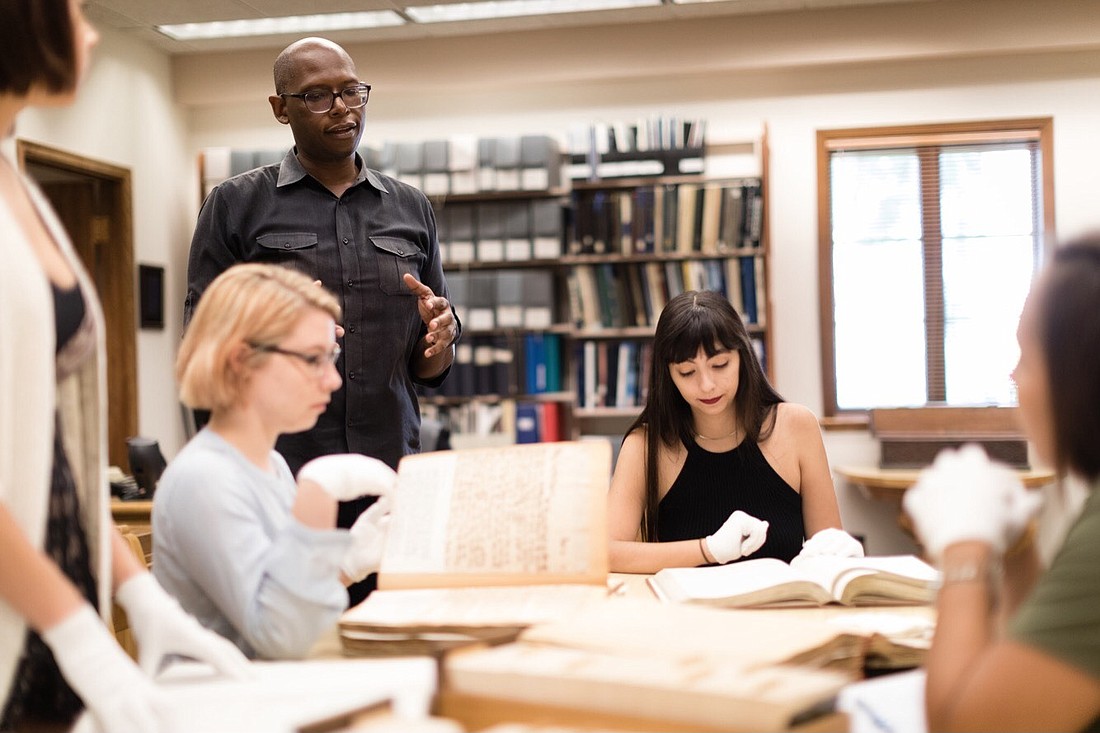- April 4, 2025
-
-
Loading

On July 18, 1922, a man named Oscar Mack was said to be hanged.
There were no tears shed, nor hymns sung by the large mob at Lake Jennie Jewel. All there was, was a vehement hatred for the African-American man who had gunned down two white men in Kissimmee.
Despite the hangings of African-Americans being commonplace during that time in the South, news spread throughout the country via a short bulletin by the Associated Press.
But there was only one significant plot hole — the report was only half-correct.
There had been a killing of two white men, but as it turns out, no one was hanged — though an innocent man almost found himself with a tightened noose around his neck before being saved by the local sheriff.
So what then happened to the man known as Oscar Mack? Enter one Rollins College professor and students from his African-American History Since 1877 class.
“For this class, I was really interested in exploring questions of memory and community from an African-American perspective,” said Dr. Julian Chambliss, a professor of history at Rollins College who focuses on urban history, race and ethnicity in the U.S., and popular culture. “I was looking for community partners, and one of the partners was Democracy Forum, which is a group that had worked back in the ’90s on the Ocoee Massacre — that group had a huge archive of material.”
The massacre in Ocoee occurred a year before the reported lynching of Mack. In that incident, an influential African-American man named July Perry hanged by a mob of angry whites, before they proceeded to burn down the homes and businesses of those in the African-American community.
During their research, a member of the Democracy Forum stumbled upon the little-known lynching and approached Chambliss to see if he would be interested in having his class work on the mystery.
So in the spring of 2013, Chambliss and his students got to work.
The first step came in the form of a book on anti-African-American violence in the 20th century, which mentioned Mack briefly in a single paragraph. After starting their research, some light began to shine on Mack’s story.
“The students found out that he was a World War I vet — he had fought in France and was honorably discharged,” Chambliss said. “Then found out he moved to Kissimmee, and then from the Kissimmee Gazette, pieced together a fuller picture of the story.
“In many ways, many of the details in the story just weren’t clear,” he said.
The story itself is like a puzzle that is missing corners from its frame.
Chambliss and his students learned Mack’s trouble started in Kissimmee when he competed with a white man for a job moving mail from the Kissimmee rail road depot to the post office.
It was a federal contract, and Mack came in under the white man, which won him the contract, Chambliss said. After winning the bid, he was verbally threatened.
The threat concerned him so much that after talking with his boss, the assistant postmaster, he was handed a gun and was told to use it if anyone bothered him while working.
Little did Mack know he would use that gun at the end of the first day of work, when three to four white men — likely Klansmen — came to his house.
“There was some altercation and he opened fire — shot and killed one man, wounded one man who died later from his wounds, and a third man escaped,” Chambliss said.
From there large, angry mobs tried hunting down Mack and at one point they thought they had him.
The mob intercepted a man who they believed to be Mack, but luckily for the man, the sheriff stepped in and persuaded the crowd to let the innocent man go. Chambliss believes that the sheriff stepped in as a means to avoid another race riot like the Ocoee Massacre.
Following the shooting, Mack fled Florida and made his way to Ohio, where he took the alias of Lanier Johnson. He had a family, and many of his descendants still live there today. In fact, in 2015, Chambliss was contacted by members of Mack’s family, who had stumbled across the project’s website. Since then, Chambliss has been in contact with the family and even was invited up to Akron this past June to be a part of one of the true highlights of the process — a family ceremony involving the changing out of Mack’s headstone.
“It was a really emotional story for them (the family) … it just answered a lot of questions and they were just thankful toward us,” Chambliss said. “They were very kind to invite us to the memorial service in part, because they wanted us to be there, because it sort of helped them answer this question about their family.”